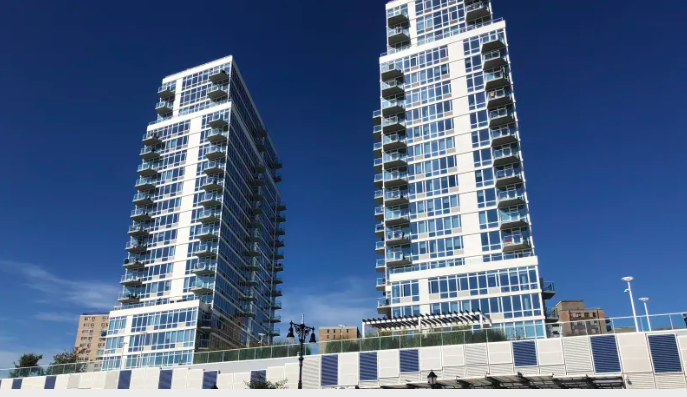The City: Gleaming new high-rise towers, built to the latest standards, stand alongside older family homes, badly in need of retrofitting. Climate change puts both at risk — although on starkly different timetables.
Pamela Pettyjohn has lived in Coney Island for three decades, and she’s the first to admit that those early days were grittier.
“There were a lot of vacant lots and burned-out buildings and drugs and things, and people were leaving Coney Island rapidly,” she said.
Her description stands in stark contrast to the Coney Island of today, where the clanging of new construction fills the neighborhood once known as a “poor man’s paradise,” and where two gleaming glass high-rise towers rise directly from the beach.“People in the community were asked to stay and build the community back, which we did,” said Pettyjohn, who is president of the Coney Island Beautification Project. “And I guess we built it back so well now everybody wants to live here.”
Since 2013, in fact, roughly 1,920 residential units have been built in Coney Island, compared to 635 units in the decade prior, according to an analysis of Department of City Planning data by THE CITY. And every single one of these new units lie within Coney Island’s floodplain.
A community of about 50,000 residents, Coney Island is on a peninsula, with a creek to the north and the Atlantic Ocean to the south. A decade ago, the neighborhood was pummeled by Superstorm Sandy, which hit during high tide. During the storm, the surge waters near Sea Gate, a private community on the west end, reached 11 feet above ground level. Much of that water came not directly from the ocean but from Coney Island Creek. The ensuing flood disrupted elevators, power, heat and hot water in almost all of Coney’s existing high-rise buildings. It took weeks to restore service to all residents.
The area’s shared infrastructure also took a beating. The MTA’s Coney Island Complex rail yard took on debris and water, which damaged essential equipment. And when the water finally receded, sand remained on the streets, making them hard to navigate. Read More >>
